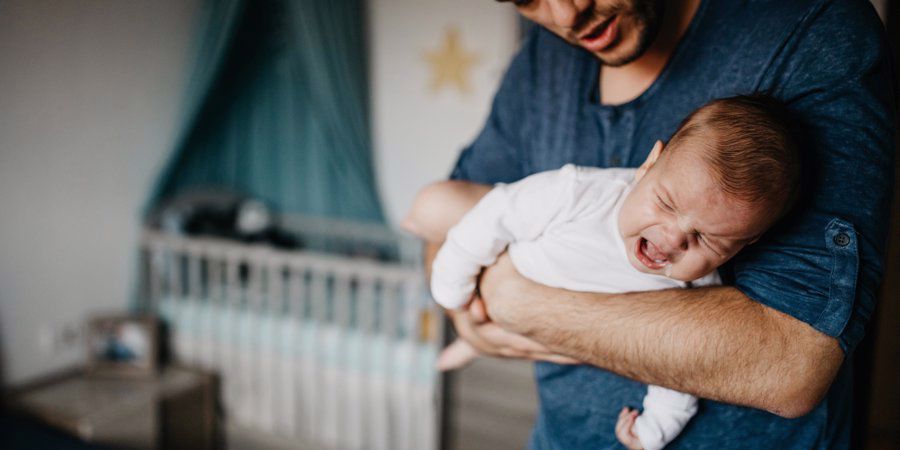As a parent, and especially for new parents, it is likely that ‘sleep’ forms a large part of your daily conversations. You’ll constantly be asked whether your baby sleeps through the night, and it can feel quite unsettling to admit your baby isn’t! We all know that sleep is good for us, and especially for babies. It is believed that longer periods of sleep for babies can lead to better cognitive abilities.
Whilst newborns aren’t generally expected to sleep more than five hours in one stretch, once your baby is over six months you can look into sleep 'training'. This may be because you're not happy with your baby's sleeping pattern, or you want to move them into their own room for example. This could also coincide with starting to move your baby onto solid foods and reducing their milk intake.
[Read more: Baby Sleeping Tips for Tired New Parents]
Whilst ‘sleep training’ does have a bit of a bad reputation, there are many techniques that you can try out. There is no one-size-fits-all approach, and it is definitely true that what works for one family may not work for another. Although it is hard, try not to compare your baby’s sleep with friends or family’s children, as every baby is unique!
Before you start making any changes, the first thing to establish is what your end goal is. In part, this will determine which approach you take. For example, if you want to reduce the number of night wakings, this will need a different method than if you want to move your baby into their own room. There is an argument that if you do want to make significant changes to your baby's routine, that you should do it all in one go, rather than one change at a time. However, you do need to take into account both your baby's needs plus your family situation. Eg. If your partner works night shifts and you have another child, you may not be able to change your bedtime routine.
If you are planning to implement a sleep training programme, you will need to plan at least a few days in advance. This will ensure that you have your partner or other family members on the side for what you will be doing, perhaps so you can take shifts or have lay-ins the next day. If your baby has siblings, it can help to explain to them what will be happening, so that they are not distressed to hear the baby crying or unsettled by a different bedtime routine. It can be helpful to start sleep training over a bank holiday weekend, or when parents have left from work, to try and minimise disruption. It’s important that you stay consistent with whichever method you have chosen, as your baby will become confused if routines and techniques keep changing. You will also need to take into account your baby’s feeding needs during the night and adapt your approach accordingly. It may be the case that your baby is not ready to give up their night feeds until past one year.
You may want to look at keeping a sleep diary, to record the timings of naps, bedtime and night wakings as well as any actions you have taken to settle your baby. This should help you to identify what your baby’s sleep cues are, which are the signs that they are ready to go to sleep. Common sleep cues are rubbing their eyes or pulling on their ears. It can also be useful (if you are awake enough) to listen to your baby’s cries, to distinguish between soft mumblings and those which need your attention. It may be the case with the soft mumbling type, that you are happy to leave them to see if they do self settle.
[Read more: Sleep Safety Guidelines for Babies]

Controlled Crying
This is arguably the most difficult approach to implement because it requires the most willpower from you as a parent. The principle behind it is that if your baby wakes in the night and cries out, you leave them to cry by themselves. This can be either for a set amount of time or until your baby stops crying and settles back to sleep. If you are following the set amount of time approach, you would gradually increase the amount of time you leave them over a number of nights or weeks.
The theory of controlled crying is that your baby will learn to self-settle, and in time, will not cry when they wake. Critics of controlled crying suggest that it is actually psychologically damaging for your baby because you are teaching them that their parent will not go to them when they cry. However, many supporters of controlled crying will passionately disagree with this!
Controlled crying can be difficult for parents to implement if they do not have the willpower to leave their baby. It may also not be suitable if the crying baby will wake other family members. However, many families have found that the stage with prolonged bouts of crying does not last beyond 4-5 nights.

Gradual Retreat
This is a great technique for encouraging your baby to go to sleep by themselves. Therefore it's brilliant for when you transition your baby to their own room, or if they are used to going to sleep with a parent present (such as being rocked to sleep). The principle is that at bedtime, you say goodnight to your baby, lay them down and then sit beside the cot or bed. Over the course of a few days or weeks, you move further and further away from your baby, so that at the end of the process you are able to leave them to fall asleep alone. An example would be, starting by holding your baby's hand as they fall asleep, then moving to just sitting next to the cot. Then moving further and further towards the door. In the early stages, your baby would still be able to see you. You would still attend to your child if they became upset, but without reverting back to the original behaviour. You're teaching your baby that falling asleep by themselves is safe and that you are close if they need you. It is an approach that requires patience, and you should be prepared for longer bedtimes, especially at the start.
[Read more: Mum Discovers MIRACLE SPRAY to Guarantee Baby Sleeps 8 Hours]
Pick Up Put Down
This is another technique for nighttime wakings and was first outlined by Tracy Hogg in her Baby Whisperer book. The principle is that when your baby wakes during the night, you pick them up and give them a brief cuddle and then lay them down again. This is rather than extended cuddles or rocking them back to sleep. An alternative approach or a progression of pick up put down is where you don't pick your baby up at all, but comfort them whilst they are in the cot. This could be something like rubbing their tummy or a kiss on the forehead. It can be useful to use a set phrase such as 'Time for sleeping' that you repeat at bedtime and wakings. At the start of the process, you may need to do multiple repetitions of the pick up put down until your baby settles back to sleep. This is where parents need to exert willpower, as it can be easy to 'give in' to the practice that works, especially if there are many wake-ups. In a similar way to gradual retreat, your baby learns that you will go to them when they wake, but they have to fall asleep without you touching them. It would be possible to combine pick up put down with the gradual retreat bedtime routine.
Attachment Parenting / No Tears
This is not a training technique as such but is another approach that needs mentioning. There is a growing movement towards a ‘no tears’ approach to baby’s sleeping, with advocates such as Elizabeth Pantley and Sarah Ockwell-Smith. Their view is that parents should observe and respond to their baby’s natural sleep needs and patterns, including night wakings. Attachment parenting advocates co-sleeping, if this is what the baby is wanting. This involves the baby sleeping either in the same bed with one or both parents, or in close proximity (such as a crib attached to the main bed). Co-sleeping can certainly be an option for many families, especially where other sleep training techniques cannot be used. However, co-sleeping should only occur when specific safety recommendations are followed, such as the parent is not intoxicated or at risk of falling on to the baby during the night.
The No-Cry sleep solution, described by Elizabeth Pantley in her book, involves comforting or holding the baby until they are falling asleep and only laying them down at this point. This could be combined with pick up put down during the night.
As you can see, there are many options to consider if you do want to try sleep training. If you are not comfortable doing so, there are some techniques that can have a significant impact on your baby’s sleep, without any tears!
[Read more: How to Actually Get Your Baby to Sleep]




